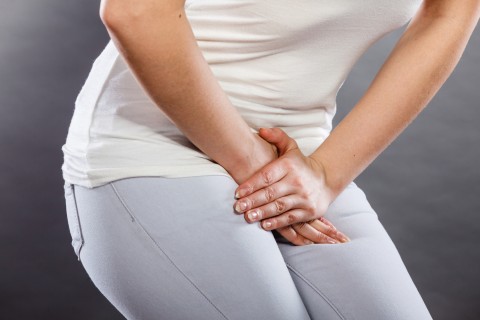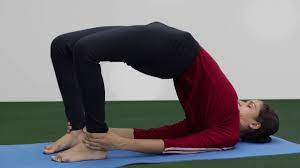
URINARY TRACT INFECTION – YOGA ASANAS
- January 27, 2023
- Posted by Dr. Vaidya Karanvir Singh
- 0 Comment(s)
Urinary tract infection is the infection of any part of the urinary system. The urinary system of body consists of kidneys, urinary bladder and urethra. In most of the cases, lower urinary tract is infected. Women are more prone to urinary tract infection as compared to men because the urethra of females is smaller. Urinary system helps in excretion of waste substances from the body. Kidneys remove excess water and waste products from the blood and urine is formed. Urine does not contain any bacteria and moves through the urinary system without contamination. Bacteria enter the urinary system from outside the body thereby causing infection of the urinary tract. When urethra is infected, it is called urethritis, infection of kidneys is called pyelonephritis and infection of urinary bladder is known as cystitis.
There are several types of treatments available for urinary tract infection. However, when infection spreads from urethra to kidneys, it can lead to serious health repercussions.
Table of Contents
WHAT ARE THE CAUSES OF URINARY TRACT INFECTION?
Urinary tract infections occur when the bacteria enter the urethra and spread upwards in the kidneys. The urinary system provides defense mechanism which helps in keeping out bacteria. But when the defense mechanism fails, bacterial growth takes place and urinary tract infection occurs. E.coli is the most common type of bacteria involved in urinary tract infection.
Following are the reasons for the occurrence of urinary tract infection:
- Females are more prone as there is shorter than males
- Sexual active persons
- Using birth control measures like diaphragms, using spermicidal creams, etc
- Had a previous urinary tract infection
- Menopause
- Use of catheter
- Kidney stones
- Enlargement of prostate gland
- Weakened immune system
- Recent urinary surgery
WHAT ARE THE SYMPTOMS OF URINARY TRACT INFECTION?
The common signs and symptoms of urinary tract infections:
- Burning sensation during urination
- Increased urination but small amounts of urine pass
- Strong urge to urinate
- Cloudy urine
- Strong odor in urine
- Pain in abdomen or pelvis
- Heaviness in pelvis
- Presence of blood in urine
- Urinary incontinence
- Pain during sexual intercourse
- Fever
- Feeling tired
- Nausea or vomiting
- Pain in back
COMPLICATIONS ASSOCIATED WITH URINARY TRACT INFECTIONS
Urinary tract infections are associated with the following complications:
- Recurrent urinary tract infections
- Infection of kidneys
- Delivering a low-weight baby
- Narrowing of urethra
- Sepsis
- Kidney damage
- Thickening of walls of urinary bladder
YOGA FOR URINARY TRACT INFECTION
Yoga is very beneficial for body and mind relaxation. It helps in managing water content in body. Yoga keeps the internal organs healthy and balances different organ systems. It flushes out various toxins from the body and increases blood circulation to various body parts.
Following are the yoga asanas which are very helpful in management of urinary tract infections:
1. NAUKASANA
Nauka means boat and asana means posture. This yoga asana is similar to the shape of a boat, hence called naukasana.
How to do it:
- Lie on the back with arms beside the body and feet together.
- While taking deep breathe, lift the chest up and feet off the ground and stretch the arms towards the feet.
- Keep the fingers and toes in line with each other.
- Maintain the pose and breathe deeply.
- While exhaling, bring back the arms and legs to the ground and relax.
Contraindications:
- Headache
- Migraine
- Low blood pressure
- Pregnancy
- Menstruation
- Asthma
- Heart patients
2. BHUJANGASANA
Bhujanga means cobra and asana means body posture. Bhujangasana is the cobra or snake pose. It can be done easily at home while lying down on the stomach and then stretching. It gives a good stretch to the body and instantly relieves stress.
How to do it:
- Lie down in stomach with the toes flat and soles facing upwards.
- Rest the forehead on the ground, keep the legs closer with feet and heels touching each other.
- Now slowly lift the body while taking a deep breath in. The navel should be kept in ground level.
- Both the hands should have equal pressure while pulling on and off of the torso from the ground.
- Hold the pose for 4-5 breaths. Then, breathe out and bring the abdomen, chest and head gently on floor.
- Repeat it for 4-5 times.
Contraindications:
- Pregnancy
- Carpal tunnel syndrome
- Hernia
- Recent abdominal surgery
- Fracture of ribs or wrist joints
3. SETU BANDHASANA
It is also known as bridge pose. In this asana, there occurs stretching of chest, neck, back muscles and spine. It is very helpful in relieving back pain and helps in strengthening of bones.
How to do it:
- Lie on the back on the floor
- Press onto the feet and slightly lift the hips upwards. You can slide a yoga block under them for giving support.
- During relaxing, remove the yoga block and bring the legs and hips down on the floor.
Contraindications:
- Pregnancy
- Neck injury
- Stomach ulcers
- Hernia
4. MALASANA
It is the squat pose. It is very beneficial for treating irregular periods.
How to do it:
- Squat with keeping the feet as close together as possible.
- Separate the thighs slightly wider than torso and lean the torso forward.
- Press the elbows along the inner side of thighs and join the palms.
- Hold the posture for 20-30 seconds.
Contraindications:
- Low back pain
- Knee injury

Dr. Vaidya Karanvir Singh is the younger Vaidya in Chandigarh Ayurved & Panchakarma Centre. He is the fourth generation in his family who is practicing as a general consultant in Ayurved & Panchakarma treatment at Chandigarh. In his practice, he had treated more than 1 Lakh Plus patients worldwide.





